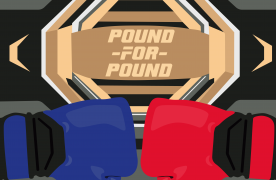While rewatching “The Worst Person in the World,” one of my favorite films, I noticed something that I never had before. As the final scene unfolded, a wave of intense hope washed over me. I realized the song that played as the movie faded to black was a perfect encapsulation of new beginnings, and I quickly searched for its title.

The song is “Waters of March” by Art Garfunkel, originally sung in Portuguese as “Águas de Março” by Antônio Carlos Jobim. The song is about spring in Brazil as an allegory for life: how it continues on despite our best efforts to control it. It reminds us how with the ugly, comes the beautiful.
It is a very ordinary song that lists several natural elements of Brazilian spring, which are used to describe an “it” that is never named. The song begins, “A stick, a stone, it’s the end of the road / It’s the rest of a stump, it’s a little alone.” It continues in this cadence for three minutes and thirty-eight seconds. While largely repetitive, the song is meditative and calming.
Although it’s about something I have no relation to — I am not Brazilian and don’t much care about spring — I was moved to tears when I heard the song for the first time. The lyrics are perfectly vague with a melancholy tone that allows the listener to project onto it whatever fantasy they please.
I thought about love. I thought about how love blossoms just as spring brings the budding of flora and hope for a warmer future. It starts small and grows, bringing hope for understanding and companionship.
“It’s the wind blowing free, it’s the end of a slope / It’s a bean, it’s a void, it’s a hunch, it’s a hope.”
When you feel the first signs of infatuation, you have a hunch it means something more, just as when you see the first signs of spring. Sometimes, as Jobim writes, it’s just a void and you get hung up on a love that was never there or a spring that won’t come for many more months.
“A sliver of glass, a life, the sun / A night, a death, the end of the run / And the riverbank talks of the Waters of March / It’s the end of all strain, it’s the joy in your heart.”
What struck me most about the song — and what makes it so universally applicable — is that it deals with the concepts of change and cycle.
While Jobim originally wrote about the cycling of the seasons and the cycle of life, I think about the cycle of love. Sometimes, it’s like a sunrise, but it can also be like a sunset. When you finally find good love, “it’s the end of all strain.”
Many things in life resemble each other, and the beauty of “Waters of March” is that it’s written with this knowledge. Buzzards, snakes, and sticks are just a few of the references to the natural world that are ripe metaphors for the struggles and joys of daily life. The specific associations that we have with each of these plants and animals help to shape our understanding of the song.
When Garfunkel sings, “the car that got stuck, it’s the mud, it’s the mud,” we know he is referencing the strife of a rainy day, or possibly the strife of everyday life. After all, mud mucks up tires and ruins clothes. In this line and beyond, the imagery of the song is perfectly poignant.
It’s such a treat to discover media that you love from other media you love. “Waters of March” encapsulates everything I enjoy about nature, change and poetry.
I encourage you to look up the soundtrack of your favorite films. You just might discover a gem.















Amazing! Well written!